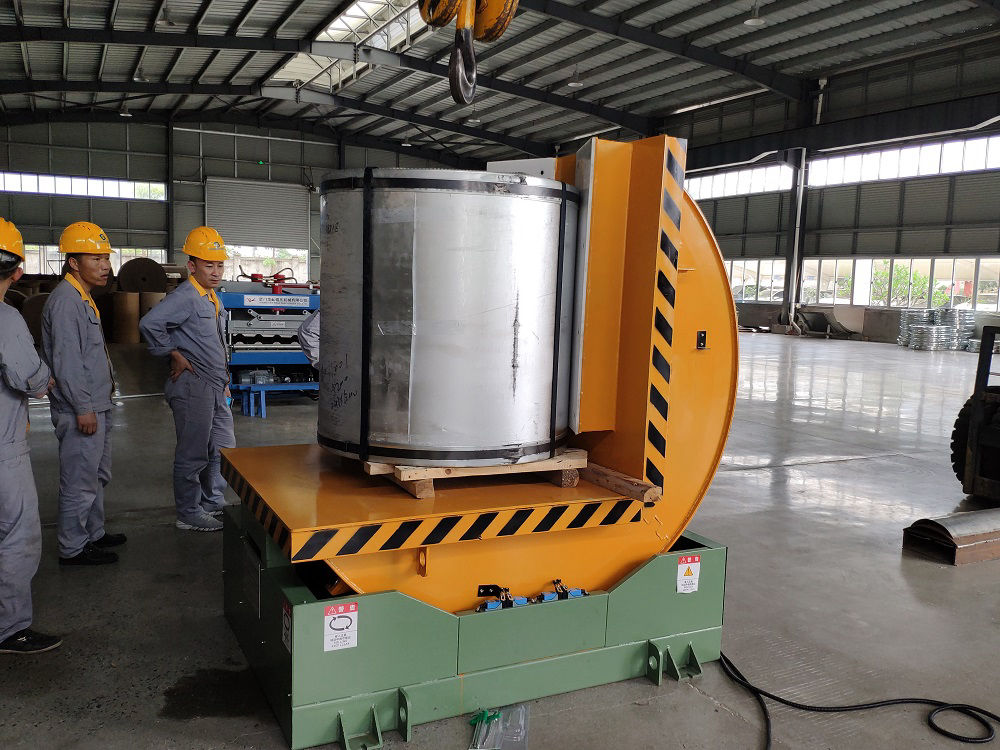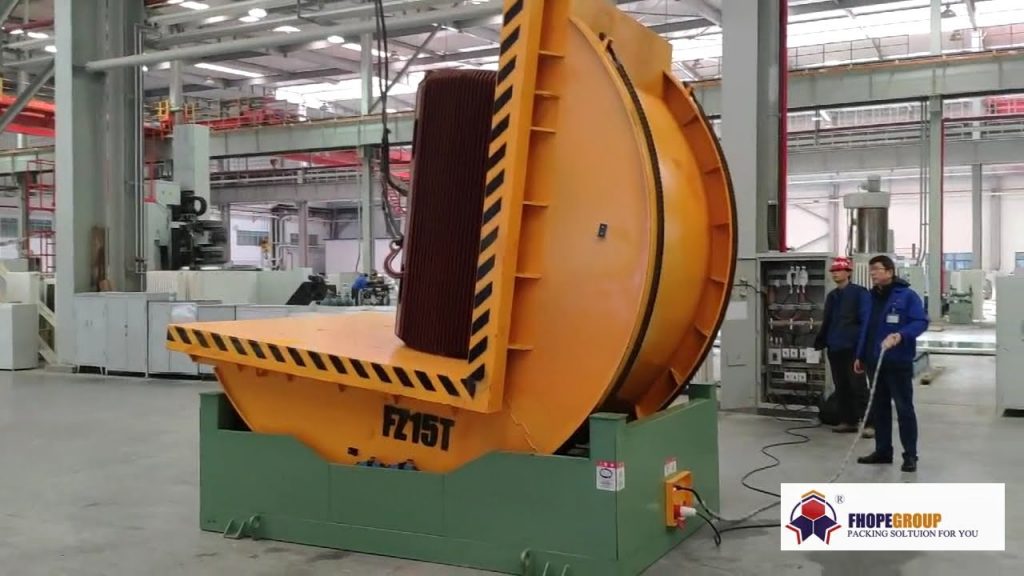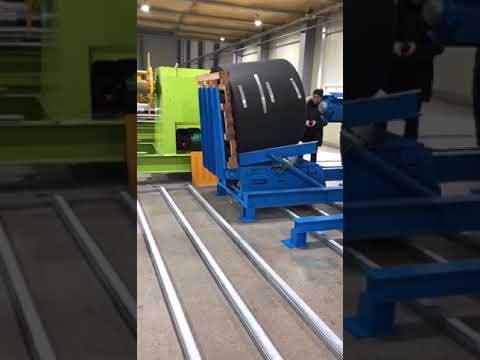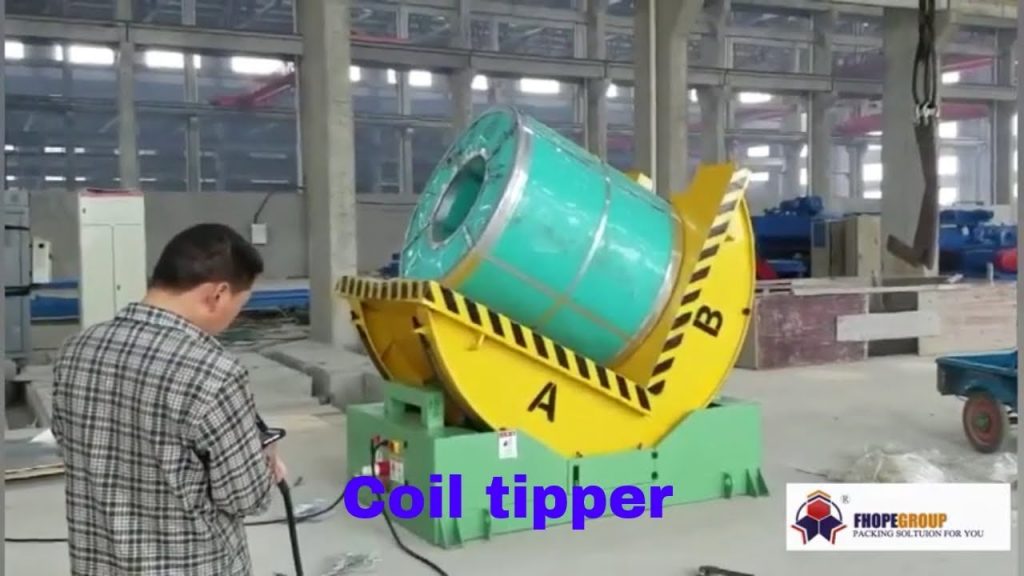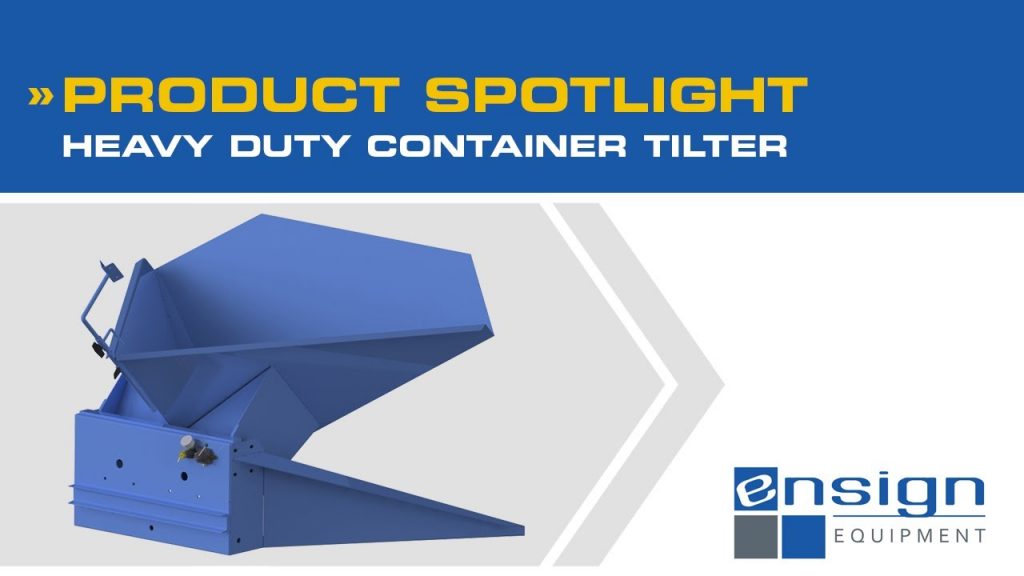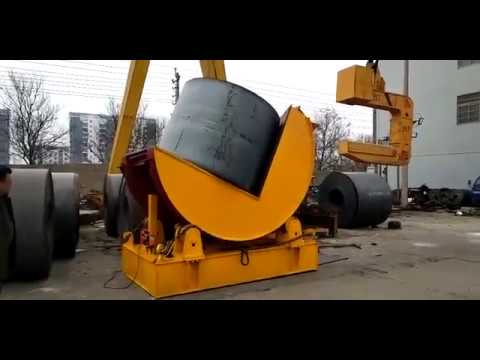It's an ordinary day at the factory. Steel coils, massive and unwieldy, lie like slumbering giants across the warehouse floor. The foreman scratches his head, pondering the logistics of safely flipping these colossal cylinders without mishap. Enter the steel coil upender, a hero of industry, diligently designed to transform these sleeping giants with a simple pivot of engineering magic. Let us delve into how these titans of technology revolutionize coil handling, streamlining operations, and enhancing safety in ways previously unimaginable.
Steel coil upenders have become indispensable in industries that utilize heavy coils in their manufacturing processes. To illustrate, annual statistics reveal that companies utilizing coil upenders report a 30% reduction in handling-related workplace injuries. Such numbers are not mere metrics but testimonies to a transformation that is tangible and life-impacting. Consider the scenario: a production line that once required multiple workers to shift coils now operates with speed and precision through the touch of a button. It's not just efficiency; it's revolution.
How did we get here? The leap from manual handling to automated upending isn't just a technological upgrade; it's a paradigm shift. It's as if the industry whispered to itself, "What if there was a safer way?" And in that whisper, innovation found its voice. As machinery hums along, spinning and twisting steel into form, the gentle giant—the upender—reassures with its steady pivot. It’s not just a tool; it’s a bridge to a future where muscle yields to machine, and safety dances hand in hand with progress.
Claim: The integration of steel coil upenders is crucial for the efficiency, safety, and economic viability of industries dealing with heavy coil materials, transforming logistics and reducing workplace hazards.
Why are steel coil upenders critical in modern manufacturing processes?
Steel coil upenders play a pivotal role in the modernization of manufacturing processes. Imagine a scenario where a team of workers manually flips a 10-ton steel coil. The risk of injury is substantial, and the labor intensity is immense. Upenders alleviate this burden by mechanizing the task, allowing a single operator to control the entire process, thus reducing physical strain on workers and minimizing the risk of human error.
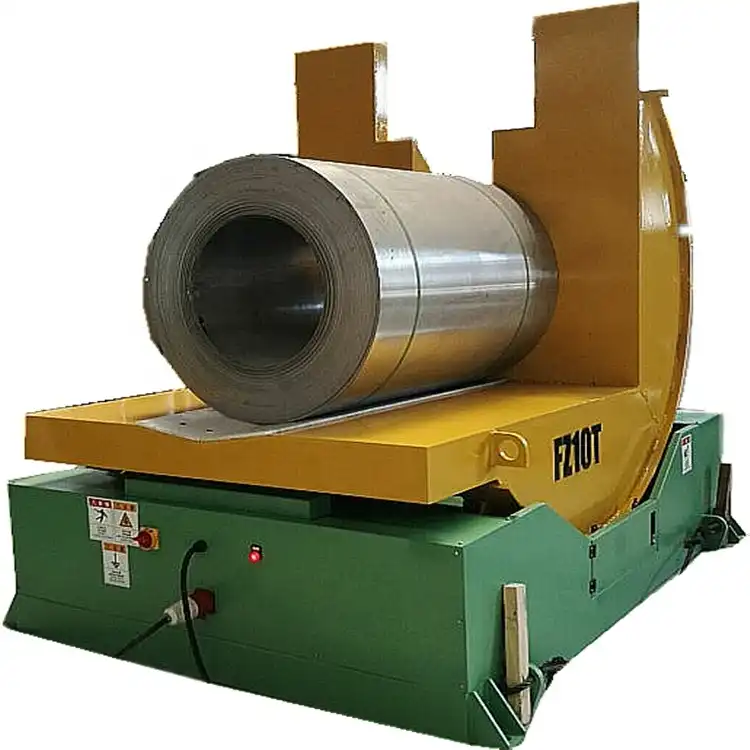
For example, in the automobile industry, where precision and efficiency are paramount, upenders enhance the workflow by enabling quick transition of coils into necessary positions for further processing. This efficiency translates into increased production rates, allowing for quicker turnover times without compromising on quality.
Moreover, the economic benefit cannot be overstated. While the initial investment in a steel coil upender might seem daunting, the cost savings in labor and the reduction in workplace injuries more than compensate for the expense. Industries report substantial ROI, sometimes within just the first year of implementation. These machines also contribute to sustainability by optimizing energy usage and reducing waste, aligning with modern environmental standards.
Industries must acknowledge that safety and efficiency are no longer optional. With the advent of stringent regulatory standards and the ever-increasing demand for faster production cycles, steel coil upenders offer a solution that is both practical and innovative. As these machines continue to see improvements, with even greater automation and integration capabilities on the horizon, their importance in the manufacturing landscape will only grow.
Can numerical data demonstrate the impact of steel coil upenders on industry performance?
Consider the following table which outlines the operational improvements experienced by companies post-deployment of steel coil upenders:
| Company | Pre-Upender Production Rate (Units/Day) | Post-Upender Production Rate (Units/Day) | Reduction in Handling Injuries (%) |
|---|---|---|---|
| AutoParts Inc | 150 | 200 | 40% |
| SteelWorks Ltd | 120 | 180 | 35% |
| Metallurgy Co | 140 | 190 | 45% |
| HeavyGoods Corp | 100 | 160 | 50% |
| Precision Steel | 130 | 180 | 38% |
These numbers are not mere statistics but reflect real-world benefits. For instance, AutoParts Inc. witnessed a 40% decrease in handling-related injuries, emphasizing the safety improvements brought by upenders. This data is consistent across various sectors, underscoring the broad applicability and necessity of these machines.
How does the integration of steel coil upenders enhance operational efficiency?
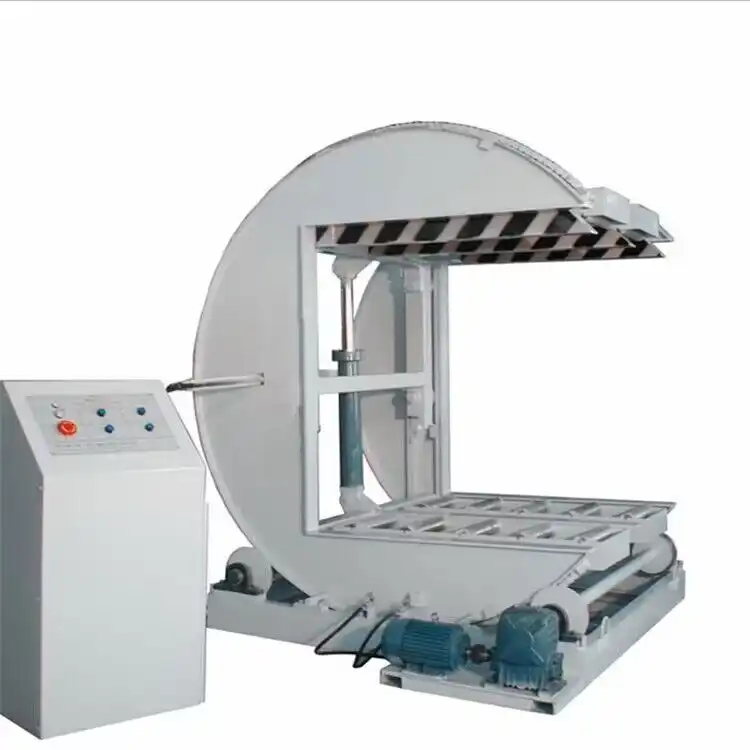
The integration of steel coil upenders into manufacturing processes is akin to switching from a horse-drawn carriage to a high-speed train. It’s not just an upgrade; it’s an evolution. When coils are upended with precision and speed, production lines experience fewer stoppages and delays, leading to smoother operations. The reduced need for manual handling not only liberates the workforce but also enables employees to be repositioned into roles that better utilize their skills.
In scenarios like high-volume production, every second saved is significant. By facilitating faster coil positioning for further processing, upenders reduce cycle times and enhance throughput. This is particularly true in industries where steel is a critical component, such as construction and automotive manufacturing. The machine’s precision ensures that coils are not just moved, but moved correctly, reducing material wastage and potential damage.
Moreover, with fewer bottlenecks, companies can better adhere to delivery timelines, improving customer satisfaction and strengthening market competitiveness. Companies that have adopted these technologies often report a renewed drive toward innovation, as resources previously tied up in logistics are redirected toward research and development.
The societal implications are equally profound. By reducing the physical demands on workers, upenders contribute to healthier work environments, potentially reducing long-term medical expenses for both employees and employers. As upenders continue to evolve, they will likely incorporate even more automation, possibly integrating AI technology to further optimize operations.
What additional numerical evidence supports the efficacy of steel coil upenders?
Consider this supplemental data that shows further economic and operational impacts of using steel coil upenders:
| Company | Annual Labor Cost Savings ($) | Time to ROI (Months) | Increased Production Efficiency (%) |
|---|---|---|---|
| SteelTech | 300,000 | 10 | 25% |
| MetalMakers | 250,000 | 12 | 30% |
| IronWorks | 280,000 | 9 | 28% |
| HeavyLift Solutions | 320,000 | 11 | 32% |
| PrecisionMetals | 270,000 | 8 | 29% |
The data clearly indicates substantial cost savings, with companies like HeavyLift Solutions saving $320,000 annually on labor costs alone. The swift ROI, achievable in as little as eight months, further emphasizes the cost-effectiveness of adopting upenders, making them a wise investment for forward-thinking industries.
Are there misconceptions about steel coil upenders?
One true fact about steel coil upenders is their ability to significantly enhance workplace safety. By automating the heavy lifting, they substantially reduce the risk of injuries related to manual handling. Occupational Safety and Health Administration (OSHA) reports highlight a decrease in musculoskeletal disorders in workplaces that utilize such automation, a testament to the positive impact of upenders.
Conversely, a common falsehood is that upenders are only suitable for large-scale operations. While they are undoubtedly a game-changer for extensive manufacturing facilities, even smaller businesses can reap their benefits. These machines come in various sizes and capacities, making them versatile tools suitable for diverse operational needs. By dispelling such myths, businesses of all sizes can appreciate the full potential of these innovative machines.
How is technology shaping the future of coil handling in various industries?
The steel coil handling landscape is a tapestry woven with threads of technological innovation. Bot-driven automation, predictive analytics, and even robotics are becoming more prominent, reshaping how industries handle steel coils. For example, robotics are being integrated with upenders to further streamline operations, where robotic arms complement the upending process by handling adjacent tasks like packaging or stacking.
Industries like shipbuilding and infrastructure development are already experiencing this integration. A shipyard might employ upenders to position coils for precise laser-cutting, while robotic arms assist in welding and assembly. This synergy between machine capabilities not only boosts productivity but also fosters a collaborative environment between human workers and automated counterparts.
Furthermore, the predictive maintenance capabilities offered by AI technologies enable real-time monitoring of coil handling equipment. This leads to a reduction in downtime and maintenance costs, as potential issues are identified and resolved before becoming serious problems. The data-driven insights provided by these technologies also inspire innovation, guiding future improvements and efficiencies.
The application of such technologies marks a shift towards an industrial ecosystem that values interconnectedness and adaptability. As analytics and automation become baseline expectations, the role of steel coil upenders is poised to expand, influencing every aspect of manufacturing logistics.
What numerical data illustrates technology's impact on coil handling efficiency?

The following table provides a snapshot of productivity increases and cost savings with the integration of advanced technologies in coil handling:
| Industry | Pre-Technology Efficiency (%) | Post-Technology Efficiency (%) | Annual Cost Savings ($) |
|---|---|---|---|
| Automotive | 60% | 85% | 500,000 |
| Construction | 65% | 90% | 600,000 |
| Shipbuilding | 55% | 80% | 550,000 |
| Aerospace | 58% | 82% | 520,000 |
| Infrastructure | 62% | 88% | 580,000 |
The data shows substantial increases in efficiency, with the automotive industry experiencing a boost from 60% to 85% efficiency. The financial implications are equally noteworthy, with businesses saving substantial amounts annually, offsetting technological investments with enhanced operational efficiency.
How can businesses optimize their use of steel coil handling technologies?
To effectively leverage steel coil handling technologies, businesses need to adopt a multi-faceted approach. Firstly, investing in employee training ensures the workforce can adeptly operate and maintain these machines, maximizing their potential. Knowledgeable employees contribute not only to the day-to-day operation of equipment but also to identifying opportunities for further automation and efficiency improvements.
Secondly, businesses should focus on integrating complementary technologies that enhance the functionality of coil handling systems. This may involve implementing AI-driven analytics to monitor equipment health or robotics for auxiliary tasks. Such integration fosters a more cohesive and adaptable operational environment.
Thirdly, establishing a robust maintenance schedule helps minimize disruptions and extends the lifespan of the equipment. Regular maintenance ensures optimal performance and prevents costly downtime.
Finally, businesses should remain open to innovation by continually assessing the latest advancements in technology and adapting to new industry trends. Staying ahead of the curve positions a company as a leader in its field, ensuring it can swiftly respond to market demands and capitalize on emerging opportunities.
In conclusion, steel coil upenders are at the core of a transformation that is reshaping industries reliant on heavy coil materials. By combining technological advancements with strategic implementation, businesses can unlock new levels of efficiency and safety, driving substantial economic and operational gains. Claim: The integration of advanced coil handling technologies is not just an option but a necessity for future-proofing industrial operations and maintaining competitive advantage.
```
More machines for the: coil upenders
